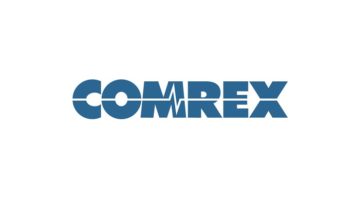PARIS — Moving the radio studio forward into the future — that’s what RTL Reunion Island and a famous rap format radio station in Paris, who would like to remain nameless, are aiming to do by using the Axia IP-Tablet Virtual Radio Software. IP-Studio is a Telos Alliance Livewire partner and broadcast solutions provider. When they came to us, these two stations both wanted to build new studios with Axia Fusion and were also interested in using all the technology available to them to make the studios of their dreams. In the end, they both decided to use two types of consoles — the traditional hardware one and a new virtual one. Mixing the virtual and physical is a solid step forward to a next-generation studio.

Powered by an Axia StudioEngine, the configurations are based on sharing the console’s resources and features with more than one operator or at more than one location in the studio. In the case of the rap radio station, the goal was to allow access to a virtual fader for the console for simultaneous microphone switching and hybrid control. The system was set up so that the speaker could control the guest microphone and hybrids from their seat with a touchscreen directly in front of them. There can be a real advantage when studio talent has the ability to see everything that they need for doing their job right at their fingertips.
For RTL, there was a desire to remove the traditional large main console screen in order to reduce the amount of screens in the studio and display only the information that they needed. There are three tablets integrated into the studio for this project running Axia IP-Tablet virtual radio. The first one in the hardware console is a tablet module used to access a virtual fader, hybrid control and Omnia VOCO preset control. The second tablet has replaced the original large HD screen to display console information and optimize the space in the studio. The third tablet was put in for displaying console information (VU meters) and hybrid control for doing game shows, and sits directly in front of the main talent.
REUNION ISLAND
In addition, we worked with Reunion Island to build four news booths with a consoleless concept by displaying the virtual mixer on the editing work station. These configurations just need a Telos Alliance Mixed Signal xNode (microphone input, speaker and headphone outputs). In these four booths the IP-Tablet software is running on a PC that includes the VX hybrid for conducting interviews.

At the rap radio station in Paris they are using two large touchscreens in front of the console. These display virtual faders, hybrids control and more in a new “open console” concept. They can display external information from sources such as the station’s website, SMS stream from the listeners and video streams from back of the studio cameras. On these larger displays, the user can control and supervise all the information they need for the show directly. In addition, the main host has a Surface PRO tablet for controlling the hybrids, switching the guest microphone and displaying console information as they see needed.
These two configuration examples demonstrate how the hardware devices (console, hybrids, voice processing, codecs, etc.) can be controlled in a number of new ways, based on sharing the resources throughout the studio in order to provide unique broadcast workflows. Increased connectivity, reducing console size and studio costs, and improving the access to the studio resources are just a few ways that the IP-Tablet Virtual Software is pushing the envelope forward.
For more information, contact Cam Eicher at The Telos Alliance in Ohio 1-216-241-7225 or visit www.telosalliance.com.







